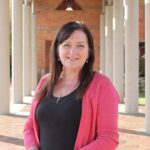More than half of older West Australians who reported falling over in the past year did not seek medical assistance, new Curtin University-led research has found, with a significant decline in the number of people being referred to prevention programs after a fall over the past decade.
The research, published in Clinical Interventions in Aging today, compared the rate of falls among WA community care clients aged 65 and over between 2005 and 2015, finding 47.7 per cent of respondents had fallen in the previous year – in line with the rate of 45 per cent reported 10 years ago.
Based on a 2015 survey of 1,991 older people, 60 per cent of those who had fallen said they had sustained an injury from it in the past year, with the most common injuries including bruises, cuts and scratches, injuries to the head or face, and fractures to any part of the body.
Lead author Dr Elissa Burton, from the School of Physiotherapy and Exercise Science at Curtin University, said just 27.4 per cent of people who had reported falling said they had been referred to a fall prevention program in the past year, marking a decrease on the 31 per cent result from a decade ago.
“People who reported having been referred to a health professional or program to prevent falls in the past year were 47 per cent less likely to have fallen than those who had not,” Dr Burton said.
“Respondents who thought that they would definitely fall or were unsure whether they might fall were also found to have a higher likelihood of having fallen in the past year.
“Our results indicate the importance of community care organisations incorporating balance exercise programs into their services and referring their clients to a falls prevention service or program as soon as a fall has taken place or someone is considered at high risk of falling.”
Of the people aged 65 years and over who did seek medical assistance after a fall (42 per cent), 45 per cent said they saw a doctor in the emergency department or hospital, 31.8 per cent saw their local general practitioner and 7.9 per cent visited a physiotherapist.
While 48 per cent of survey respondents reported falling during the previous year, almost one-third said they had suffered a fall in the month prior to completing the survey.
Of those who had fallen at some time during the previous year, 41.9 per cent (398 people) reported falling once, 24.3 per cent (231 people) twice and 12.3 per cent (117 people) three times. Fourteen respondents reported falling more than 12 times during the year, with two people, who both reported balance problems, estimating 60 falls each.
Dr Burton said one million older Australians are receiving government-funded community aged care services, including domestic assistance, personal care, nursing, transport, gardening and social support.
“Many older people receiving community aged care services will have experienced decreases in strength and balance, bouts of illness, and ongoing pain or injury, which also increase their risk of falling,” Dr Burton.
“Given almost 100,000 people were hospitalised due to falls in 2012-13, it is so important to gain a better understanding of the causes and prevalence of falls to prevent older Australians from suffering injuries.”
Just under half (49 per cent) of the respondents who had fallen in the past year said they had fallen in their home, more than a quarter said it had occurred in their yard and 12.9 per cent in a public place.
The most common reasons for having fallen included tripping (25.5 per cent), over balancing or over reaching (25.3 per cent), and legs giving way (18.4 per cent), followed by not concentrating (16.2 per cent) and rushing (10.6 per cent).
The survey was completed by 1,991 people aged 65 years and over who were receiving care from 10 community care organisations in WA. Respondents reported living in their own home or unit, an independent living unit in a retirement village or government housing.
The research, funded by a Lotterywest grant, was also conducted by Professor Gill Lewin, from the School of Nursing, Midwifery and Paramedicine at Curtin University, Hilary O’Connell, from the Independent Living Centre WA, and Professor Keith Hill, from the School of Physiotherapy and Exercise Science at Curtin University.
The paper, ‘Falls prevention in community care: Ten years on’, can be viewed here.



